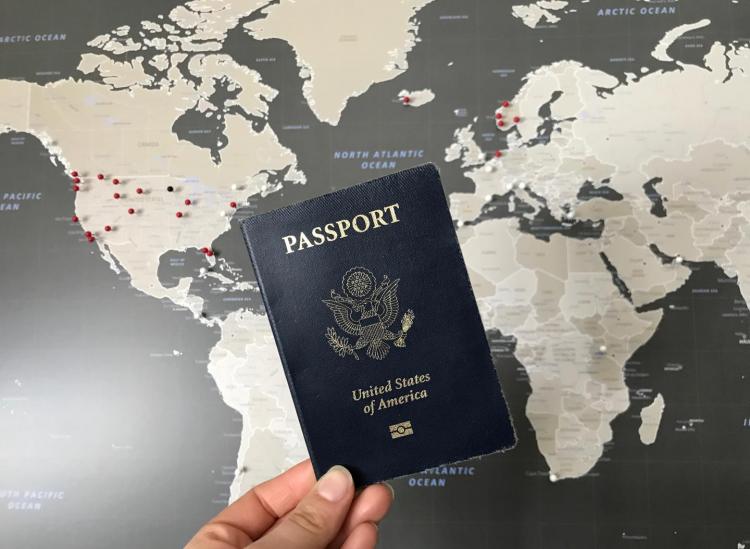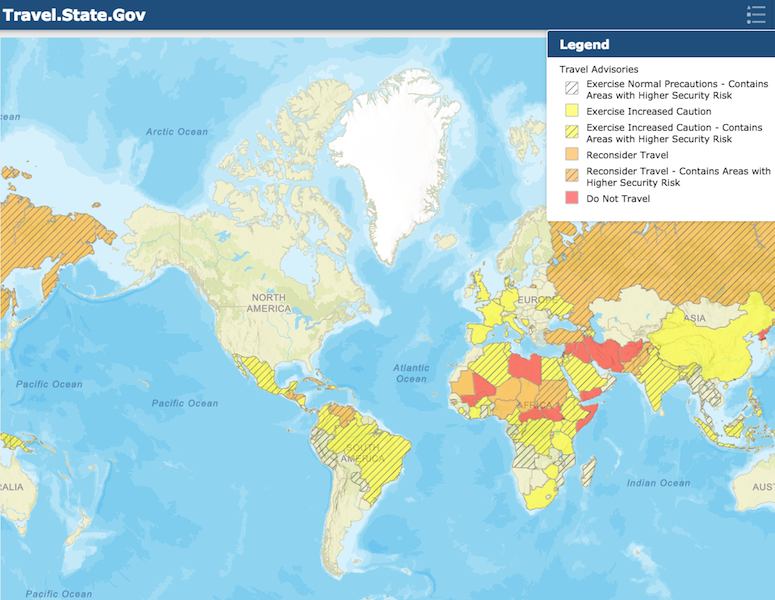Here’s Everything You Need To Know About The State Department’s New Travel Warnings

Libby Ryan
Good news for those in the midst of travel planning: The U.S. Department of State recently updated its system for telling travelers where is safe and not so safe to explore around the globe. Finally.
The difference between a travel “warning” and a travel “alert” was constantly confusing, even for those who repeatedly looked up the definitions. So now, the state department has classified 195 countries in the world with a rating between 1 and 4 and a color code to make it super easy to understand.
Here’s what you need to know about the new system and how to interpret it when planning a trip.
What do the warnings mean?
Analysts at the state department rated all the countries with a 1 to 4 rating and a color coding. Level 1 (blue) is the lowest – places the government feels great about you traveling to, AKA anywhere you’ll have to “exercise normal precautions,” according to the state department. As of January, Australia and Japan fall into the Level 1 category. You’ll take normal steps for safety just like you do at home.
For yellow-coded Level 2 countries, the state department says to “exercise increased caution.” Level 3 is orange; that’s where the state department says to “reconsider travel.”
The Level 4 countries are ones that the state department label as “do not travel” destinations for Americans. As of January, the Level 4 countries include Afghanistan, Iran, Iraq, Libya, North Korea, Somalia and Syria.

U.S. Department of State
How should I use them?
Wondering how safe a certain country is? There’s an interactive map for that. Countries above a Level 1 are color-coded to match their ratings, so you can immediately see what the state department advises.
The state department also lists what kind of risk factors caused countries to receive a Level 2, 3 or 4 rating, and there are handy abbreviations for these, too. For instance, a “T” indicates the risk of terrorist attacks, “U” means civil unrest within the country and “N” signals a recent natural disaster.
There are also countries where the state department may classify the entire country as a Level 2 but call a specific region inside the country a Level 3. It’s worth taking a look at a country’s individual page for the reasoning behind the government’s warning.
How seriously should I take them?
Here’s the thing: These are recommendations, not rules. Turkey is a Level 3 country, so the state department says you should “reconsider travel.” But no one will stop you from traveling to Turkey right now – and plenty of people go every day.
That being said, do your research. Don’t let any single site or source tell you where you should or shouldn’t go. We say this with the added caveat that we also do vote against traveling to Iraq, North Korea, Syria, etc. Don’t be stupid — do be informed.











